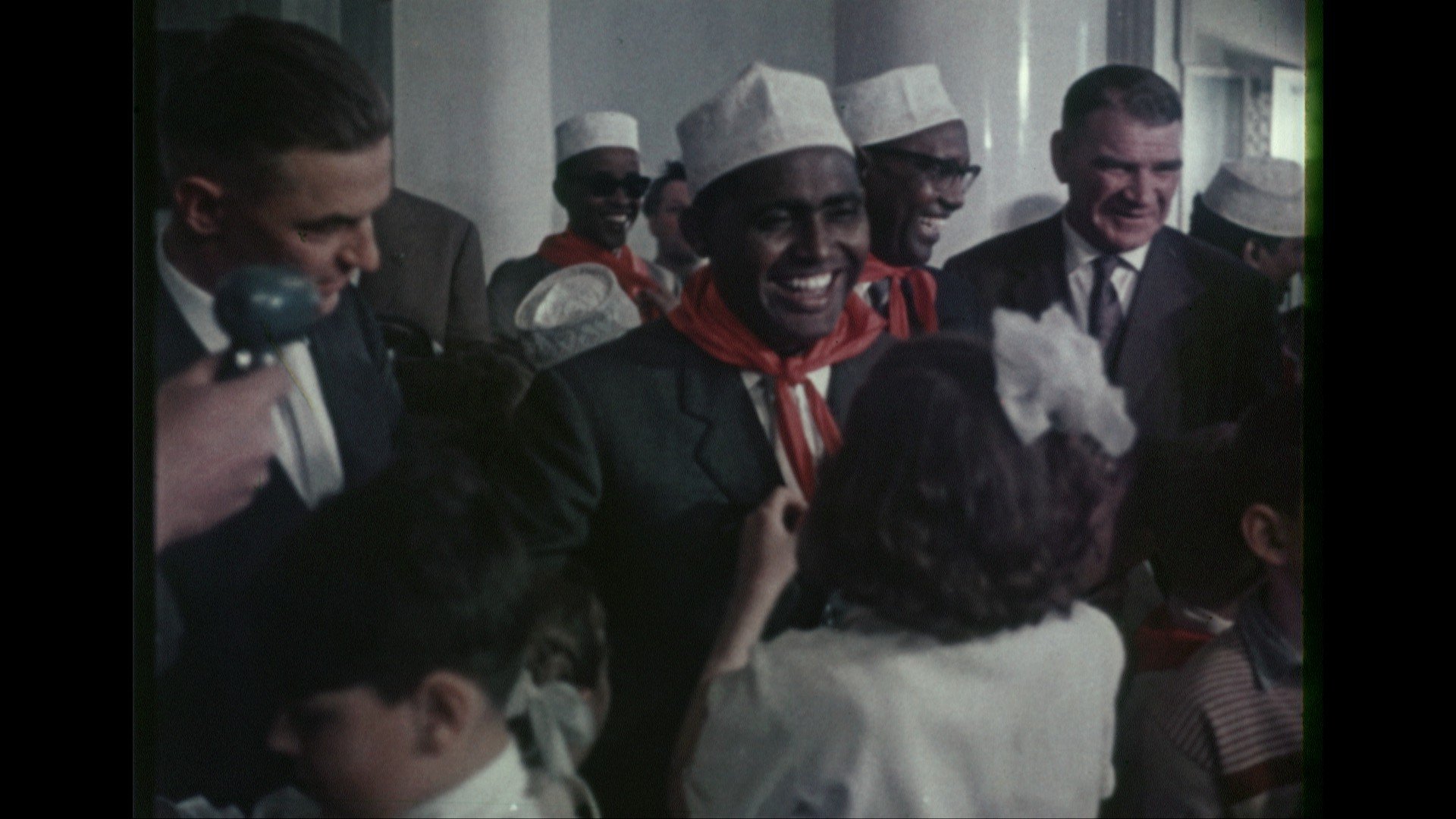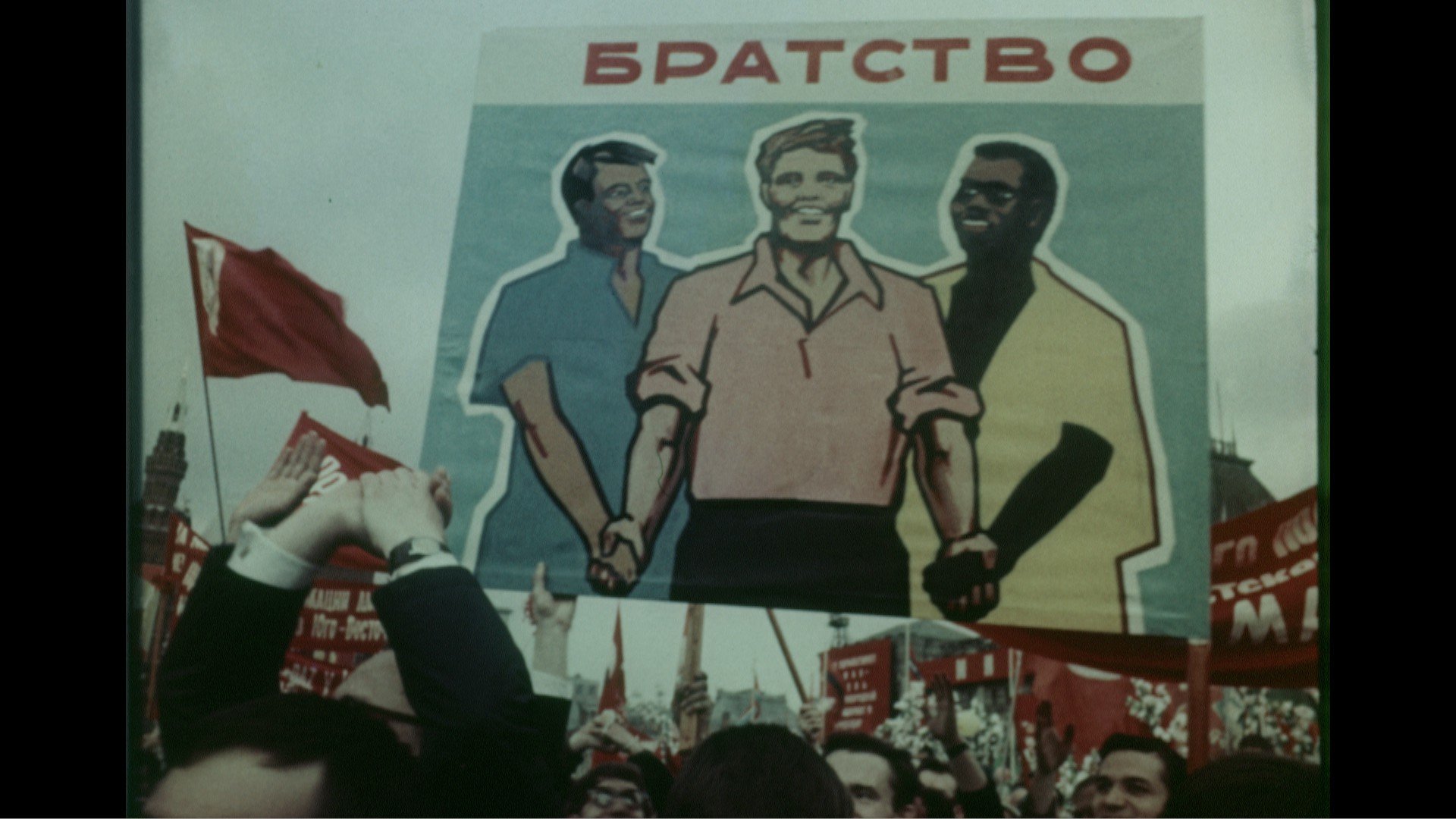“Sound can bombard you, music is manipulative” – Alexander Markov on Red Africa
The Soviet Union’s presence in post-colonial Africa is a topic that has long interested director Alexander Markov and one that he returns to again and again in his filmmaking. In 2012, he released a 20-minute documentary titled Our Africa: Thousands of Kilometers of Soviet Film which looked at some of the over 700 documentary films he found under the keyword “Africa” in Russian State Film and Photo Archive. The Soviets had spent decades on the continent, trying to exert their influence on the newly liberated nations in exchange for promises of socialist utopia, and so Markov’s archival work later developed into the 45-minute Our Africa (2018). It seems as though the footage still had more to say, and ultimately Markov’s archival exploration culminated with the feature-length Red Africa (2022) which looks at the full timeline of Soviet presence in Africa from the early 1960s through to the dissolution of the Soviet Union in 1991.
Before Red Africa’s UK premiere at the Barbican Centre, curator Teodosia Dobriyanova spoke to Alexander Markov about the vast archive that has been the centre of his work for years.
TD: It has been years since you first explored the USSR’s attempts to attract recently liberated African nations to the eastern part of the Iron Curtain. Do you remember what initially drew you to this topic?
AM: The first time I encountered the footage was in 2006 when I met the director of the New York African Film Festival, Mahen Bonetti. She asked me if I could find some Soviet films made on the African continent. She was interested in it because her father used to work as a diplomat in Moscow from Sierra Leone. So I started a job for her as a curator and, for seven years, each year we would focus on a country, usually one celebrating an anniversary of their independence. Year by year, looking at all these films, I noticed that even though they were filmed in different countries, by different filmmakers, in different years, they all looked the same, like one big film. It’s the same structure and the same voiceover because the majority of the films were coming out of the film studio in Moscow. Maybe around 90 percent were – there were some from Leningrad (Saint Petersburg) and some from Lithuania, Georgia, Armenia, and so on. So, because the footage was so homogenous, I saw a possibility to create, aesthetically, one film about the 30 years of Soviet presence in the African continent. Also, if you look at the Soviet films, they made, it looked like every country they showed was building socialism. Sure, it's understandable about Mali, Guinea, Guinea Bissau, Angola and Mozambique, of course. But they made it look like it was the whole continent, except for South Africa because of apartheid. This type of propaganda was very interesting to me, I found it very ironic, and I wanted to show this irony.
TD: You can feel the ironic tone in Red Africa. On one hand, your footprint as a filmmaker is visible – there’s a playfulness and creativity to it which reminded me of Bruce Conner’s archive films. Yet, you’ve also let the footage speak for itself. The only voiceover we ever hear is diegetic, coming from the archive, and there is no additional context, no grand conclusions. How did this approach develop?
AM: I was overwhelmed by their Soviet voiceover, which was their way of controlling the narrative. And I also did not find any interviews – there was one from the 1960s with the leader of Sudan, a few from the 1970s, but the voiceover was everywhere. I decided to take out the voiceover and use my imagination. On one hand, it was a pity that there were no interviews available, but at the same time, this allowed me to create what I wanted and focus on the cinematic. It was like working on a silent film – when the sound does not exist, you have to cut very clearly and pay more attention to the images.
TD: Red Africa’s sound design is another tool that draws further attention to the images– whether it's the sound of the Soviet flag blown by the wind or the chainsaw cutting a tree. Can you tell me about the role of sound and how you approached that?
AM: I think that was one of the most important parts of the film’s creation. From my point of view, this type of sound design is part of a tradition. I got it from Sergey Loznitsa’s film Blockade (2006). At that time, I was very strict about direct cinema, and so when I saw Loznitsa’s film, I was confused. It was unlike any traditional sound design I had experienced. I also saw some of Alexander Sokurov’s fiction films, and I became friends with one of his sound designers, Sergei Moshkov. And I remember thinking: “Wow, you can do that?” These people left space for sound, for the audience to think instead of having sound overwhelm you. And I thought this liberates the audience and their point of view. I wanted to liberate the audience from the overwhelming effects of sound, which can bombard you. And no music. Music is very manipulative. It plays with our feelings.
TD: You spent such a long time with this footage – first as an archivist, and then as a filmmaker. Was it difficult to then find your structure and narrow it all down to a 70-minute film?
AM: The history mainly gave me the structure as the footage started in the 1960s and ended when the Soviet Union collapsed. So that was the starting point. I used the sequences from 120 films and also some footage, but there wasn’t much available because the Soviets didn’t keep footage at all. They kept the final films but not the footage, so much of the material that didn’t end up in their final films disappeared. But what saved me were what I call the visiting films – when African leaders came to the Soviet Union and Soviet leaders went to the African countries. I was looking for characters to follow and I found them there – Brezhnev was one, and I could focus on him.
And then another thing was the rituals – all the leaders visiting Lenin’s mausoleum, all the leaders visiting factories. You could immediately see how the Soviets arranged these people and situations to create a certain image. Nowadays, we can immediately see that it’s propaganda. And it was just about spotting patterns in this ocean of footage. Another thing that interested me was the ecological theme and the contrast between how we think of these issues today and what Soviet leaders thought then. Perhaps not just Soviet leaders, but all technocrats. They were proud of how many animals they killed, and how many trees they cut. And for them, it was a way to promote internationalism and what it could give to the Soviet Union. If you look at the footage today, this is already ironic. All I need to do is cut it in a way that makes it clear.
TD: I think these tree-cutting scenes constitute one of the moments in Red Africa that showed that what the Soviets presented as a friendship and an exchange of goods and services perhaps is not really that, and these were the same politics of extraction as in Western colonialism. And I wonder, how do you think these topics resonate in audiences today?
AM: If we think about the Soviet Union or now Russia, it is historically an imperialistic state, and this mentality persists. I showed Red Africa once in Russia on the big screen in Moscow. It was a big cinema, there were probably around a thousand people. And I would say only around 20 percent seemed to understand my issue. The others said – Wow, we did not know that we had this friendship with African countries, that we were so powerful in Africa! And this idea that “we were powerful” destroyed me. People still need to be powerful, this is a reflection of the Russian audience. The Soviets were proud of that, and the Russians, not all and not everyone in the audience, but for a lot of them, this imperialism and colonial point of view still works.
TD: Red Africa ends with the dissolution of the Soviet Union and the liberation movements in the Baltic States, Belarus and Ukraine, among others. You said that when making the film, you saw it as the logical end of the story. In today’s context, do you still see it that way?
AM: There is inner colonialism, and inside and outside colonialism, so to speak, and for the Soviet Union, it was like, inside colonialism – they took the territories that were close to the state. We see this nowadays with this brutal war in Ukraine – it’s a continuous process of imperialistic ambitions. For me, it is about that. But it’s the 21st century, and the destruction of empires is a very natural process. The Soviets criticised Western colonialism, but how can you criticise if you are doing the same thing to others? So, from my perspective, I am using this footage to show the other side of imperialistic ambitions. In Africa, they used soft power, and African people were coming to pursue education in the Soviet Union, and for many people, this was an opportunity for an exchange of cultures, and it formed friendships and families. People who experienced this side of it may disagree with what I am saying, but the goals of the Soviet Union were not that – they just wanted to win the Cold War game.




